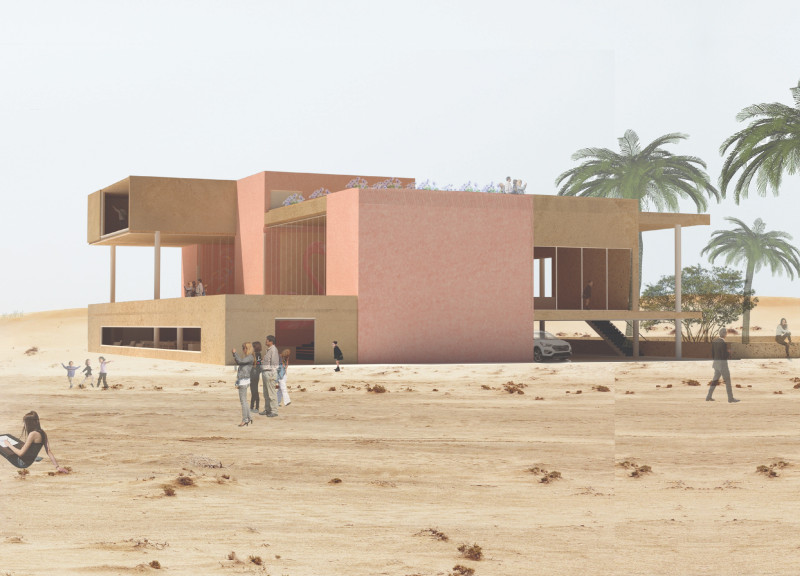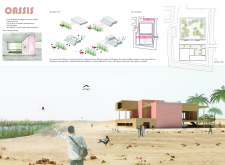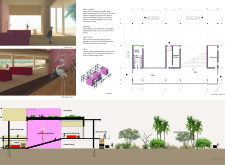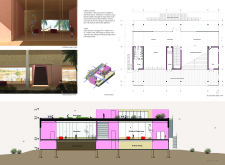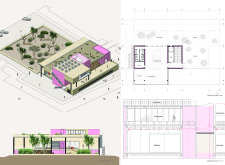5 key facts about this project
The project serves as a Flamingo Observation Gallery, thoughtfully conceived to promote interaction between visitors and the rich biodiversity of the landscape. Its architectural form is primarily composed of three parallel rectangular structures, creating a tiered effect that allows for different levels of engagement with the environment. This massing strategy not only adds visual interest but also capitalizes on the best views of the wetlands and mountains, guiding visitors throughout the space and offering various focal points for observation.
The design of the Oasis is rooted in its context, with a focus on integrating the built environment with the natural landscape. The concept emphasizes a harmonious relationship between architecture and nature, encouraging visitors to reflect on their surroundings. Walkways and observation decks are placed strategically to lead guests into the heart of the observation experience, creating pathways that inspire curiosity and engagement.
Material selection plays a pivotal role in the project, where concrete, stone, steel, and glass are meticulously chosen to enhance the building's performance and aesthetic. Concrete provides durability and longevity in the harsh desert climate, while stone elements blend with the natural terrain, grounding the structure in its environment. The use of steel ensures structural flexibility while allowing for expansive glass facades that invite natural light and provide unobstructed views of the vibrant wetland ecosystems. This careful attention to materiality not only contributes to the overall sustainability goals of the project but also facilitates a sensory experience that connects occupants with their environment.
Unique design approaches characterize the Oasis, most notably through its integration of renewable energy features such as solar panels positioned on the roof. This element not only promotes energy efficiency but also aligns the architectural vision with contemporary sustainability practices, reflecting a commitment to reducing environmental impact. Furthermore, the incorporation of roof gardens adds another layer of interaction with the surrounding ecosystem, allowing visitors to engage with landscaped elements that foster biodiversity.
Interior spaces of the project have been optimized for functionality while maintaining a connection to the outside world. The ground floor includes essential visitor amenities, creating a welcoming atmosphere, while the upper levels are dedicated to observation and exhibition purposes. The layout encourages flow and movement through spacious, light-filled areas, emphasizing a visitor-centric approach that prioritizes educational experiences surrounding wildlife conservation.
The Oasis stands as a testament to thoughtful architectural design that respects and enhances its ecological context. Its emphasis on creating a space for contemplation and observation embodies a broader narrative about the role of architecture in environmental stewardship and public engagement. The careful curation of spaces and experiences invites visitors to explore and understand the importance of wetlands, wildlife conservation, and the beauty of natural landscapes.
For those interested in deeper insights into this architectural endeavor, a closer examination of the architectural plans, architectural sections, and architectural ideas would provide a comprehensive understanding of how this project successfully merges form, function, and sustainability. Exploring these elements will reveal the intricate details that make the Oasis a notable example of contemporary architecture in a sensitive ecological setting.


